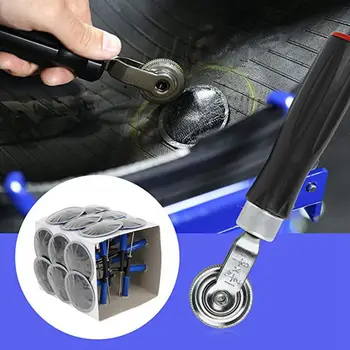Compare
Compare
Compare
Compare
Compare
Compare
Compare
Compare
Compare
Compare
Compare
Compare
Compare
Compare
Compare
Compare
Compare
Compare
Compare
Compare
Compare
Compare
Compare
Compare
Despite eight figure verdicts and public safety campaigns by the National Highway Traffic Safety Administration (NHTSA) highlighting the dangers of improper tire repairs, (“plug-only” and “patch-only”) repairs, suppliers continue to market and sell plug-only repairs kits. Likewise, tire repair shops continue to use these improper repair methods.
This web page discuss tire repair techniques, the relative safety of those various repair methods, tire repair litigation and some of the reasons these unsafe methods persist.
Safe and Unsafe Ways to Repair a Tire
Most people discover that their in-service tire may have a puncture after noticing that their tire is flat or low on air.
There are three common ways to repair a punctured tire: A plug-only, a patch-only repair or a combination repair. The patch-only and combination repairs require the technician to demount the tire from the rim to examine the inside of the tire for damage and repair it from the inside. The plug-only repair does not. When tire rubber has been punctured, the hole tends to close up when the puncturing item us removed. Therefore, unless there has been damage or the puncturing object is still protruding from the tire, it can be difficult to locate the puncture through a visual examination only.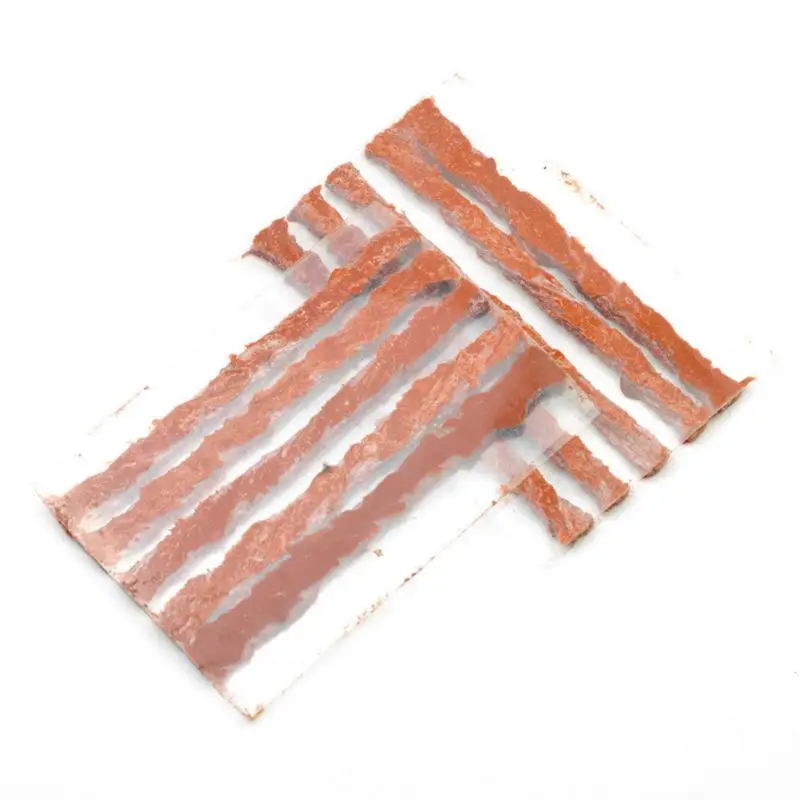
Technicians will often swab the tire with soapy water or dunk it into a tank to look for bubbles of escaping air. It is impossible to inspect the cavity of the tire for any puncture damage without removing the tire from the rim. This is one of the multitudes of reasons why a plug-only repair is an unsafe method.
A plug-only repair is accomplished by inserting the plug through the outside of the tire with an insertion tool. The insertion tool is the removed, leaving the plug in the hole, and thereby filling it. Often times, this plug-only repair is a “string plug,” which consists of a 4 to 5 inch long woven cord that is covered with a tacky substance. String plugs are typically supplied as part of a repair kit consisting of a reaming tool, an insertion tool and a few string plugs. Some kits also contain rubber cement to help create a seal between the string plug and tire. The cost of a string plug repair kit ranges from $4.00 to $5.00. It is also possible to purchase additional string plugs at a cost of $2.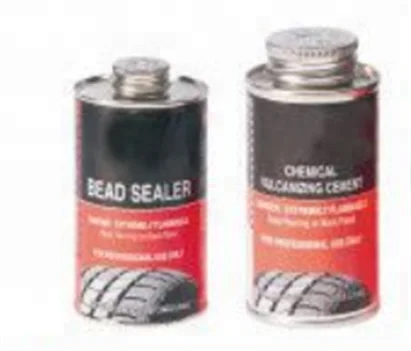 00 to $3.00 for a package of three to five replacement plugs. A string plug repair facility cost half of other types of repairs, making it an attractive alternative for consumers looking to save money.
00 to $3.00 for a package of three to five replacement plugs. A string plug repair facility cost half of other types of repairs, making it an attractive alternative for consumers looking to save money.
Tires that have been punctured and repaired with a string plug may hold air for months, years even for the remaining life of the tire. For this reason, many consumers consider a string plug repair a permanent solution. The tire manufacturing industry expressly disagrees. Various industry publications state that the greatest potential danger caused by a string plug repair is that this type of repair allows air and moisture to penetrate the body of the tire. The tire industry maintains that these elements seep in between the layers of the tire allowing the steel belts to degrade and causing the tire to deteriorate and corrode from within. Over time, this corrosion weakens the steel belts and the bonds between the rubber-to-rubber layers and rubber-to-the-wire layers of the tire, greatly increasing the risk of a tread separation.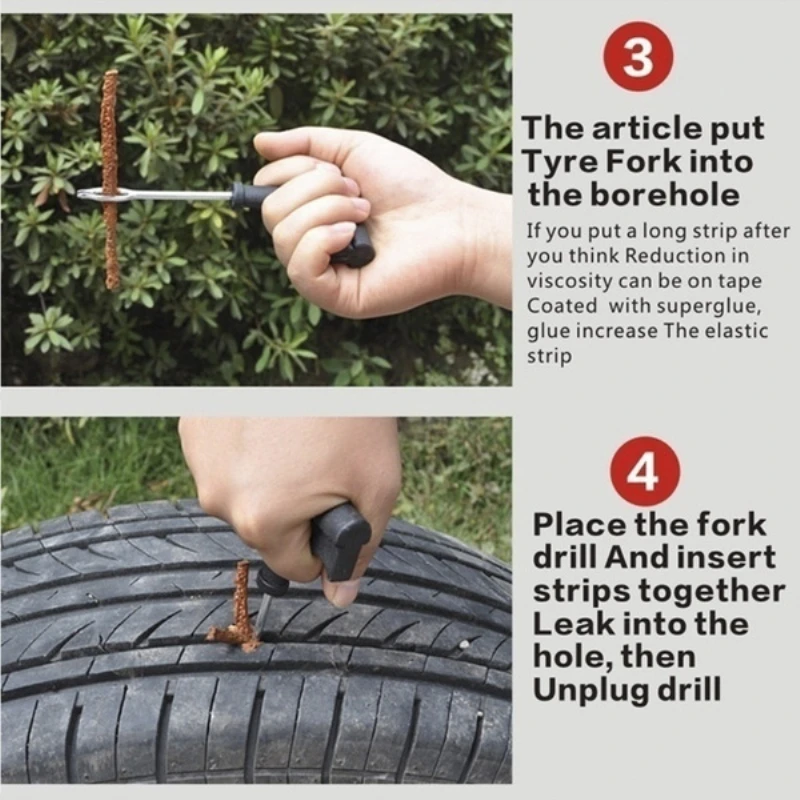 An additional risk of performing a string plug repair is that a puncture, even if it is within the “repairable” area of the tire, may cause damage to the inside of the tires. Without inspecting the inside of the tire, it is impossible to determine whether any damage has occurred, requiring it to be scrapped.
An additional risk of performing a string plug repair is that a puncture, even if it is within the “repairable” area of the tire, may cause damage to the inside of the tires. Without inspecting the inside of the tire, it is impossible to determine whether any damage has occurred, requiring it to be scrapped.
The second common tire repair method is a “patch-only” repair. In order t patch a tire, the technician must remove it from the rim to locate the puncture from the inside of the tire. After the puncture has been located, the area surrounding the puncture on the inside of the tire is prepared with scrapers, buffing tools and cleaning solutions in order to prepare the area to “bond” with the repair unit or patch. After preparation, vulcanizing cement is then applied to the patch and inner liner of the tire and the patch is applied over the puncture hole. The patch and surrounding area is stitched or rolled, and may be covered with sealant before the tire is put back on the rim. The tire industry also considers this repair method to be improper because it may allow air and moisture to seep into the tire through the injury channel from the tread surface.
It is NHTSA’s position that a combination repair is the only way to properly repair a tire puncture. A combination repair consists of a repair patch with a rubber plug/stem attached to its center. There are some rare circumstances when a separate patch and plug can be used, but normally the industry guidelines recommend a combination repair unit that is only one piece. After a puncture is located, it is reamed out to create a clean hole for the plug. The area around the puncture on the inside of the tire is then prepared to bond with the patch. Vulcanizing cement is applied to that area and to the patch/plug combination. The plug is pulled from the outside of the tire through the reamed hole so that it completely fills the hole and created a tight seal with the rubber of the tire. The patch bonds to the inside of the tire, preventing air from escaping with the plug seals the puncture hole preventing air form escaping while the plug seals the puncture hole preventing air and moisture from invading the tire. The rubber stem is trimmed to be even with the surrounding tread.
The rubber stem is trimmed to be even with the surrounding tread.
Tire Repair Litigation
The above tire repair methods have been in use for decades and litigation involving the failure of repaired tires is not new, nor is it particularly widespread. In fact, tire manufacturers will use “improper repair” as one of their primary defenses in litigation. Most recently, in October of 2011, a state court jury in Tampa, Florida awarded $13.64 million to Gwen and Roy Chattelle after they suffered a tire failure and crash at highway speed that rendered her a quadriplegic. The case went to trial against the service center and its employee, who inspected and improperly repaired a tire before the crash.
Three months prior to the crash, the Catelli’s right rear tire was low on air and was inspected and repaired by Tampa Auto Repair. There was no evidence introduced showing that the right rear tire had been moved, replaced or repaired again between the time of the repair and the time of the crash.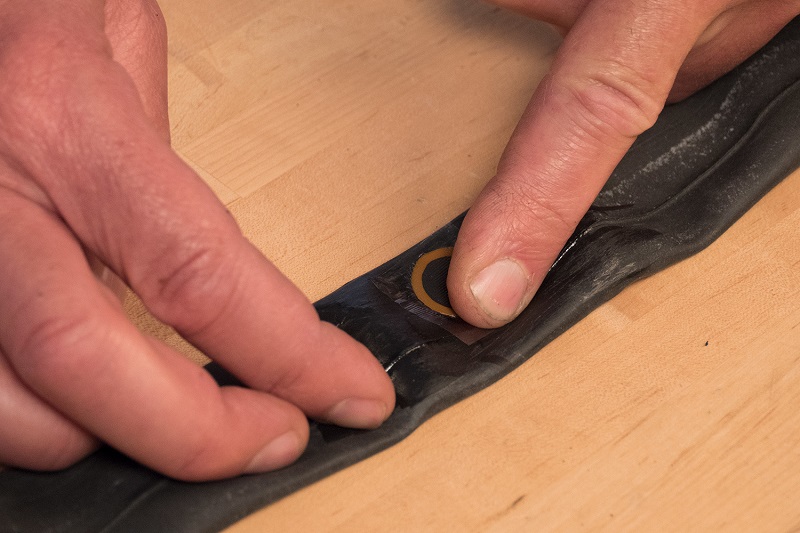 At the time of the crash, the tire experienced a partial tread separation, suffered a catastrophic loss of air pressure and as a result, the vehicle went out of control rolled over several times. Inspection of the failed tire showed that it had two punctures. The first puncture had been repaired with an improper string plug and was already in the tire. Plaintiffs contended that the second puncture was an additional improper repair by the defendants that never properly bonded and, as a result, the repair unit became dislodged. Plaintiffs’ experts opined that the Defendants violated industry standards and their own internal policies requiring a tire with an existing improper repair to be removed from service rather than repaired. Destructive testing showed rust on the second puncture and evidence verifying the corrosion of the belts from exposure to air and moisture. The jury returned a verdict for the plaintiffs, finding that the repair shop and its manager were liable for the Plaintiff’s damages.
At the time of the crash, the tire experienced a partial tread separation, suffered a catastrophic loss of air pressure and as a result, the vehicle went out of control rolled over several times. Inspection of the failed tire showed that it had two punctures. The first puncture had been repaired with an improper string plug and was already in the tire. Plaintiffs contended that the second puncture was an additional improper repair by the defendants that never properly bonded and, as a result, the repair unit became dislodged. Plaintiffs’ experts opined that the Defendants violated industry standards and their own internal policies requiring a tire with an existing improper repair to be removed from service rather than repaired. Destructive testing showed rust on the second puncture and evidence verifying the corrosion of the belts from exposure to air and moisture. The jury returned a verdict for the plaintiffs, finding that the repair shop and its manager were liable for the Plaintiff’s damages. In march 2011, a jury in San Diego County, California awarded almost 14.5 million to the minor sons of Casey and Melanie barber who were killed in a 2006 Accident in which their van rolled over. At the time of the accident, the Barbers’ children were 3, 5 and 8 years old. The Barber case went to trial against a dealership that had repaired the tire using “patch-only” repair method described above. Additionally the puncture in the Barber’s tire was outside the reparable are recognized by the tire industry and evidence was presented at trial that the mechanic failed to prepare the area around the puncture to bond with the patch. Evidence was introduced that the tire mechanic who performed the repair had been on the job for less than a week and the shop had provided him with no how to properly repair a tire.
In march 2011, a jury in San Diego County, California awarded almost 14.5 million to the minor sons of Casey and Melanie barber who were killed in a 2006 Accident in which their van rolled over. At the time of the accident, the Barbers’ children were 3, 5 and 8 years old. The Barber case went to trial against a dealership that had repaired the tire using “patch-only” repair method described above. Additionally the puncture in the Barber’s tire was outside the reparable are recognized by the tire industry and evidence was presented at trial that the mechanic failed to prepare the area around the puncture to bond with the patch. Evidence was introduced that the tire mechanic who performed the repair had been on the job for less than a week and the shop had provided him with no how to properly repair a tire.
This highlights the fact that consumers are unacquainted with proper tire repair methods and assume they can rely on “professional” tire repair facilities to employ mechanics with the training necessary to complete repairs properly. These recent cases emphasize the need for minimum training requirements for persons authorized to perform tire repairs. There is currently no Automotive Service Excellence certification for tire repair.
These recent cases emphasize the need for minimum training requirements for persons authorized to perform tire repairs. There is currently no Automotive Service Excellence certification for tire repair.
In 2006, a minor child in Florida was injured when the vehicle he was riding in experienced a tire blow out and crashed. The tire had been repaired at a service station with a string plug, but no patch. The Plaintiff sued the manufacturers of the string plugs, claiming that plug only repairs are unsafe and unreliable and can lead to tire failure. The trial court granted summary judgment to the plug manufactures, ruling the plugs were not defective in and of themselves because both sides’ experts testified that they could be used safely in combination with a patch. The court of appeals reversed holding that even if a string plug was not defective in all situations, such as when used in combination with a tire patch, the jury could have found that the string plugs failed to perform as safely as a reasonable consumer would expect under Florida’s “consumer expectation” standard in product defect cases.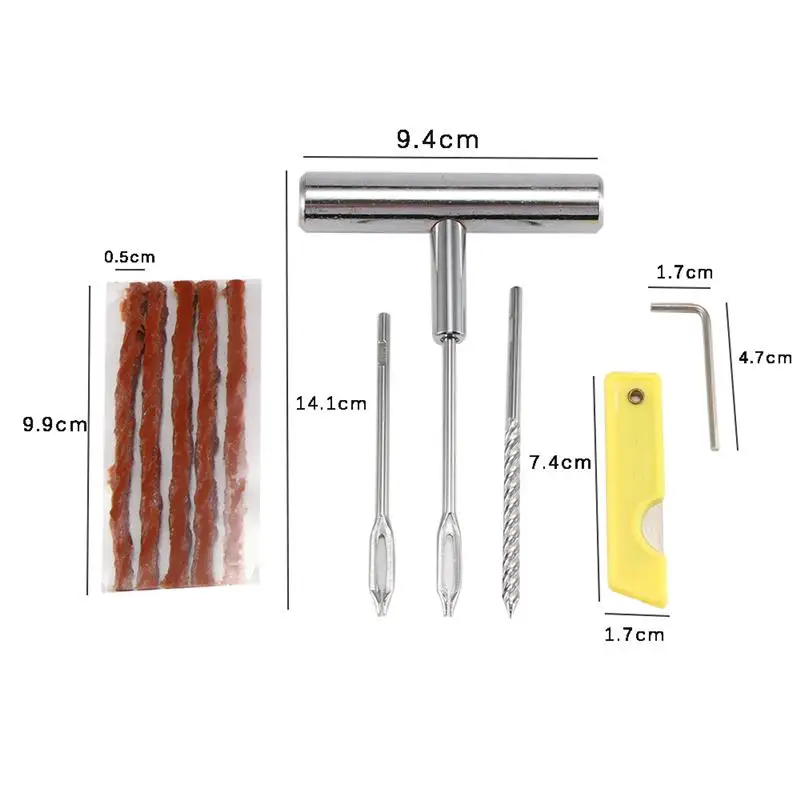
In 1996, in Peterson V. Ress Enterprises, a Chicago jury awarded $12.65 million to the Plaintiff. Peterson was a college student who was rendered quadriplegic in an accident resulting from a tire failure. The Plaintiff contended that the accident tire was improperly repaired by the defendants using a plug-only repair five months before the crash. On appeal, the appellate court affirmed the judgment in favor of the Plaintiff. The appellate court’s summation of the expert testimony in instructive about how string plug repairs can lead to tire failure:
Plaintiff’s expert testified that the tire failed upon road hazard impact because it was improperly repaired for a puncture with a string plug, causing air to seep into the tire’s casing. Goodyear’s expert testified that he failed tire was weakened prior to the accident by air seepage and migration resulting from Ress’ string repair.
Goodyear’s other tire expert testified that tire failures result from string plug repairs and that a string plug without a patch does not effectively seal a tire’s inner liner and air can seep into a tire’s carcass.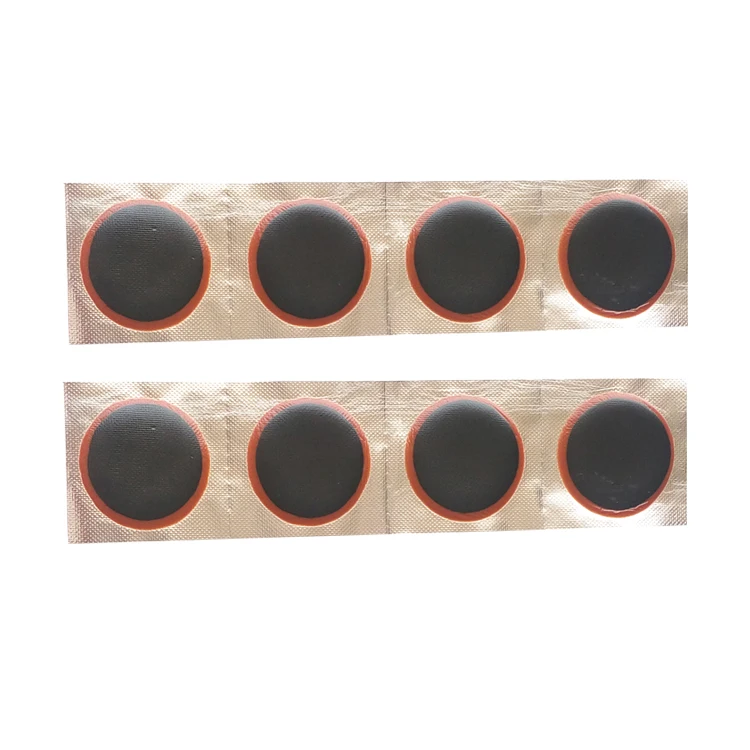 Goodyear’s expert further testified that tread separation affects belt strength and renders a tire less capable of traversing road hazards.
Goodyear’s expert further testified that tread separation affects belt strength and renders a tire less capable of traversing road hazards.
Despite widespread knowledge among such industry experts that string plug repairs are unsafe; this knowledge does not appear to be shared by the public. One challenge for plaintiffs in prosecuting a tire repair case is that many jurors have preconceived opinion that patch-only and plug-only repairs are safe and effective. Due to the lack of knowledge, many consumers believe these repairs are proper. These misconceptions are buttressed by the fact that improper can last years without failure. As a result, any juror seated in a tire repair case will likely have either personal experience with plug-only or patch-only repairs that perform without incident. Potential jurors will also hear a long string of anecdotes from other potential jurors who used these improper repairs without incident.
A second challenge, which was highlighted by the Peterson case, is that most failed tires have been in service for some period of time and show signs of some form of abuse or misuse, such as road hazards, under-inflation or overloading. These conditions, which may or may not have contributed to the tire’s failure, create challenges in proving causation. They certainly result in ready-made defense for defendant tire manufactures. Oftentimes, multiple causes will come together, such as in Peterson, where the collective trial experts opined that the immediate precipitation event was an impact with an unknown road hazard. However, the collective Peterson experts reasoned that the tire was unable to withstand a road-hazard impact because it was already weakened by internal deterioration from the string plug.
These conditions, which may or may not have contributed to the tire’s failure, create challenges in proving causation. They certainly result in ready-made defense for defendant tire manufactures. Oftentimes, multiple causes will come together, such as in Peterson, where the collective trial experts opined that the immediate precipitation event was an impact with an unknown road hazard. However, the collective Peterson experts reasoned that the tire was unable to withstand a road-hazard impact because it was already weakened by internal deterioration from the string plug.
Why the use of Improper Repairs Persists Despite Clear Warnings
Despite the difference of a few dollars in cost between an unsafe, improper repair and a safe combination repair, widespread use of these improper repairs persists. Several factors contribute to this continued popularity of improper repair techniques. First, because plug-only repairs are performed from the outside of the tire and do not require demounting the tire from the rim, a plug-only repair can performed by almost anyone, anytime and with nothing more than an inexpensive repair kit.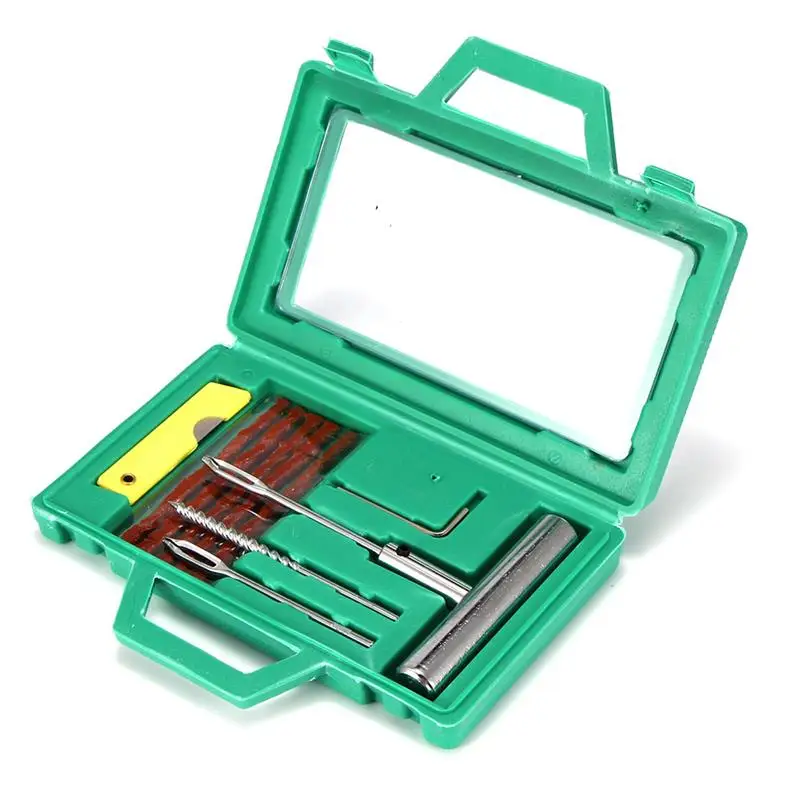 It is a relatively simple process that does not require the multiple steps necessary for a proper repair, like demounting, sanding or buffing, nor are adhesives required, making these repairs faster and less expensive. For most people it means the difference between being able to “do it yourself” at your own convenience, and having to leave your vehicle at a repair shop to be fixed on someone else’s schedule.
It is a relatively simple process that does not require the multiple steps necessary for a proper repair, like demounting, sanding or buffing, nor are adhesives required, making these repairs faster and less expensive. For most people it means the difference between being able to “do it yourself” at your own convenience, and having to leave your vehicle at a repair shop to be fixed on someone else’s schedule.
Secondly, problems caused by plug-only repairs may not happen immediately and, therefore, even if the tire does eventually fail, people may not associate that failure with the repair that occurred months or years earlier.
Additionally, many tire mechanics are never trained with proper techniques and many have used string plugs for years, resulting in a comfort level with the product. Many tire repair shop policies actually encourage the use of this method. Past testimony indicates that some shops are unaware or unconcerned with the safety issues caused by plug-only repairs.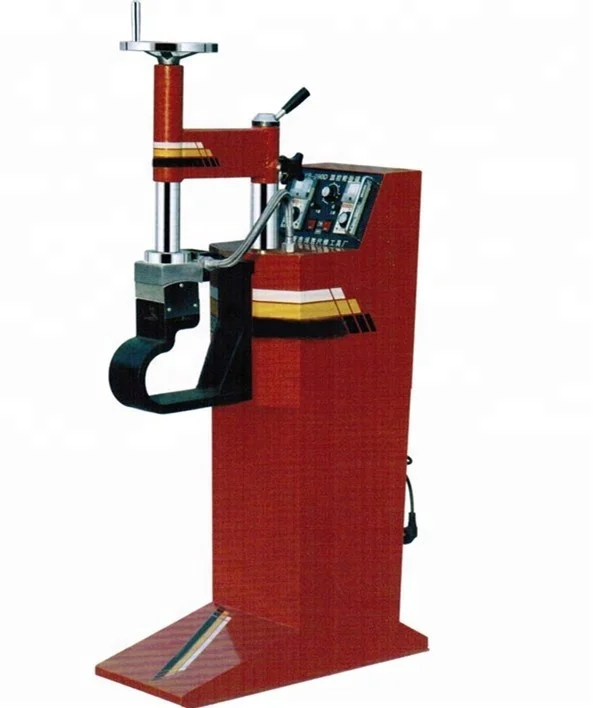 Other shops yield to the wishes of consumers who may insist the mechanic perform a plug-only repair that may save money. Still other cases show that some repair facilities actually train their mechanics to use plug-only repairs and supply the shop with the tools to do so. However, even shops those “officially discourage or prohibit the use of string plugs often employ a pricing and wage structure that creates a strong incentive for its workers to use them anyway.
Other shops yield to the wishes of consumers who may insist the mechanic perform a plug-only repair that may save money. Still other cases show that some repair facilities actually train their mechanics to use plug-only repairs and supply the shop with the tools to do so. However, even shops those “officially discourage or prohibit the use of string plugs often employ a pricing and wage structure that creates a strong incentive for its workers to use them anyway.
After reporting the out come of Barber case discussed above, one automotive repair websites received scores of comments critical of the litigious Americans” who had field lawsuits related to plug-only repairs. One commentator, apparently a mechanic at a facility that repairs tires said “We were told to patch, but I buy my own plugs … a patch pays 0.3 a plug pays 0.3” In other words, most repair facilities compensate mechanics by the type of job, assigning a specific amount of time to complete it. If a tire, it will usually take longer that the time allotted to perform a combination repair. These results in a incentive for the mechanic to use the quicker, less effective repair method to save time, make more money and move on to the next job.
These results in a incentive for the mechanic to use the quicker, less effective repair method to save time, make more money and move on to the next job.
Finally, consumers are unacquainted with the long term dangers of driving on tires with improper repairs. There are strong public sentiment that our government is overly active in recalling and banning unsafe products, so it is reasonable for consumers to assume that if string plug repair kits are being offered for sale legally at reputable retailers and tire repair shops, they must be safe. A cursory review of multiple automotive websites reveals the widely revels the widely held belief that if a string plug holds air, it is safe to use. Some consumers buy “emergency tire repairs kits” just to get them through a roadside emergency, but then forget to replace the tire. Consumers may also assume that if the tire is holding air, the string plug is “working” without realize that it is causing the tire to slowly deteriorate from the inside.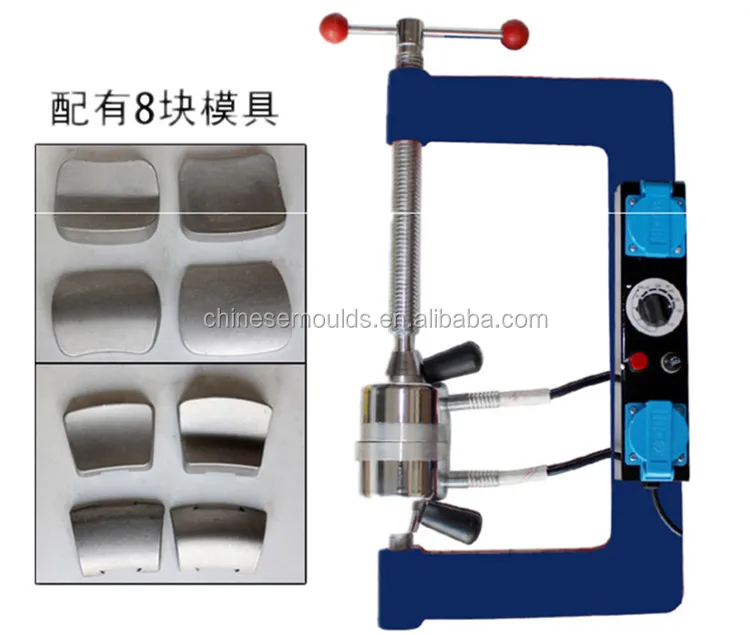
Sale of tools for repairing tires and tubes from a warehouse (St. Petersburg, Moscow, Chelyabinsk, Kazan) from the manufacturer, production at factories and deliveries.
Order price lists with prices for car service equipment in the car service equipment department.
| art.
| Hand extruder For heating raw rubber and quickly filling the damage funnel when repairing and retreading oversized tires |
| ||
| art. no. 05 010
| Fan heater For drying damaged areas of tires during repairs |
| ||
| art.
| Heater For heating raw rubber during the repair of car tires, belt conveyors and other rubber products |
| ||
| art. no. 11 011
| Heater For heating raw rubber during the repair of car tires, belt conveyors and other rubber products |
| ||
| item no.
| Electric drill T-TEC For burring the damage funnel |
| ||
| item no. *
| Reciprocating saw For the treatment of damage to steel cord tires hot and heavy duty and CGSH |
|
* These positions are agreed with the client depending on the size and models of tires to be repaired.
| art.
| Pneumatic drill 1800 rpm For burring the damage crater |
| art. no. 05 053
| Pneumatic drill 24000 rpm For working steel cord with abrasive tool |
| item no. *
| Air hammer To remove air and ensure a snug fit when installing patches on hot tires and TGSH |
| item no. *
| Air gun For tire inflation |
| art. no. 05 055
| Pneumatic drill with attachments 22000 rpm. For working steel cord with abrasive tool |
* These positions are agreed with the client depending on the size and models of tires to be repaired.
| Burrs | For treatment of the damaged channel when installing fungi
| ||||||||||||||||||||||||||||||
| Cap cutters | For treating damage funnel
| ||||||||||||||||||||||||||||||
| Hole cutters | For repairing damage to steel cord oversized tires
| ||||||||||||||||||||||||||||||
| Brushes | For treating damage funnel
| ||||||||||||||||||||||||||||||
| Abrasives | For processing steel cord
| ||||||||||||||||||||||||||||||
| Buffing cones | For initial processing of rubber
| ||||||||||||||||||||||||||||||
| Buffing rings | For initial processing of rubber
| ||||||||||||||||||||||||||||||
| Buffing wheels | For initial processing of rubber
| ||||||||||||||||||||||||||||||
| Buffing tool (white) | For rubber finishing
| ||||||||||||||||||||||||||||||
| Sanding mandrel | For fixing the abrasive belt when finishing rubber
| ||||||||||||||||||||||||||||||
| art. no. 06 004 | Universal bead expander | ||
| art. no. 06 003 | Lever expander | ||
| art. no. 02 003 | Wheel support | ||
| art. | Spiral awl | ||
| art. no. 03 001 | Insertion awl | ||
| art. no. 04 022 | Scraper | ||
| item no. 05 001 | Smooth roller | ||
| art. no. 05 002 | Toothed roller | ||
| art. no. 06 001 | Timer | ||
| art. no. 02 000 | Stand for vulcanizer | ||
| art. | Hoist | ||
| art. no. 06 020 | Tire lift
|
|
| Flagella
| |||||||||||||||||||||||||
|
| Fungus
| |||||||||||||||||||||||||
|
| Universal patches
|
| art. | Brush Cleaner (1000 ml) |
| art. no. 10 600 | Thermal mortar (1000g) |
| art. no. 10 700 | Universal Degreaser (1000 ml) |
| art. no. 20 301...20 303 | Raw rubber |
| art. no. 20 304 | Cord rubber (3000g) |
| art. no. 20 306 | Cleaning rubber (1500g) |
Used for repairing through damages with broken cord of radial tires of cars and trucks, agricultural, earthmoving and quarry equipment by cold vulcanizing.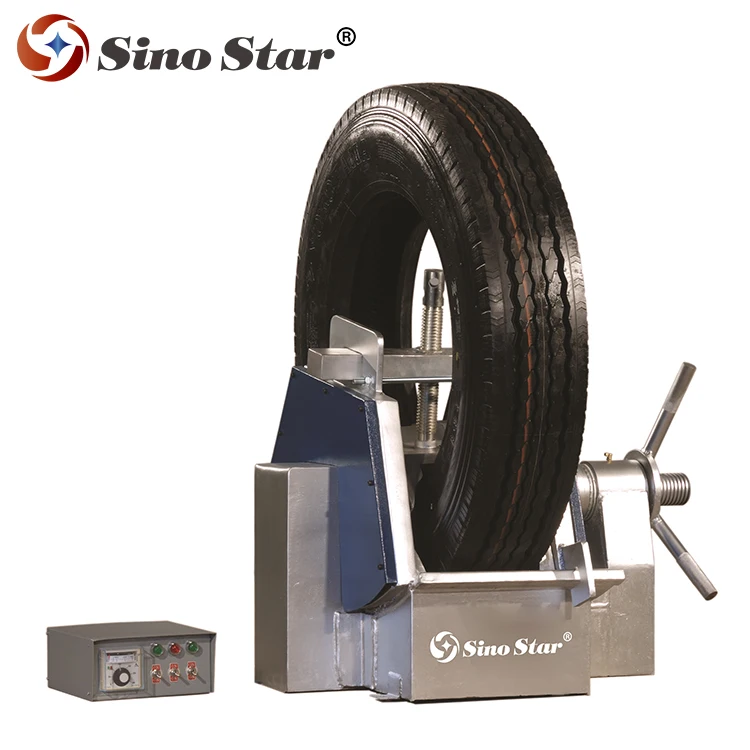
The design feature of these patches is that they take the load on the entire area from the edge of the bead to the middle of the treadmill. A sufficiently long and at the same time thin patch slightly increases the rigidity of the side wall at the repair site, which has a positive effect on the quality and reliability of the repair of radial tires.
Radial patches are made of durable imported cord. These patches are prevulcanized except for a thin active blue layer. At the same time, patches of large sizes for the manufacturability of the installation and the exclusion of tire deformation at the repair site are made in a bombed form, i.e. their profile matches the tire profile. Such patches have no analogues not only in Russia but also abroad.
Install and select patches in accordance with the requirements of the technological instructions for tire repair and using the tables for selecting patches.
Used to repair through damages with broken cord of radial tires of cars and trucks, agricultural, earthmoving and quarry equipment by hot vulcanizing method .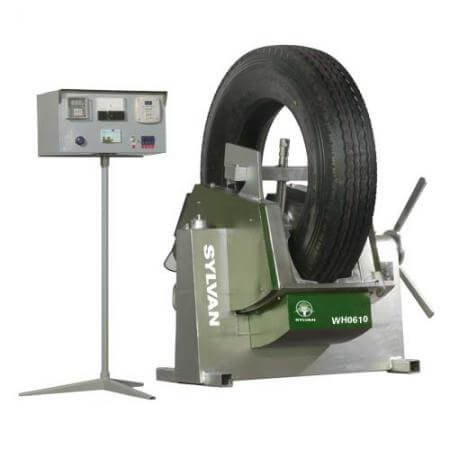
The design feature of these patches is that they take the load on the entire area from the edge of the bead to the middle of the treadmill. A sufficiently long and at the same time thin patch slightly increases the rigidity of the side wall at the repair site, which has a positive effect on the quality and reliability of the repair of radial tires.
Radial patches are made of durable imported cord. These patches are prevulcanized, except for a black rubber adhesive layer of a given thickness, which allows the patch to be installed without additional duplication. In this case, patches of large sizes are made in a bombed form, i.e. their profile matches the tire profile. Such patches have no analogues not only in Russia but also abroad.
Install and select patches in accordance with the requirements of the technological instructions for tire repair and using the tables for selecting patches.
Used for repairing through damages with broken cords of diagonal tires of cars and trucks, agricultural, earthmoving and quarry equipment by cold vulcanization.
Due to the special design of the diagonal patches, the widest and longest layers adhere to the tire carcass, which is crucial for a reliable tire repair. Bias patches are used to repair both viscose and nylon tire casings. In the design of diagonal patches for road construction tires, the direction of the cords is exactly matched to the angle of intersection of the carcass threads of the tires.
Diagonal patches, thanks to the use of imported cord, are very strong and at the same time flexible. These patches are prevulcanized except for a thin active blue layer. At the same time, patches of large sizes are made in a bombed form, that is, their profile corresponds to the profile of the tire. Such patches have no analogues not only in Russia but also abroad.
Install and select patches in accordance with the requirements of the technological instructions for tire repair and using the tables for selecting patches.
Used for repairing through damages with broken cords of diagonal tires of cars and trucks, agricultural, earthmoving and quarry equipment by hot vulcanizing.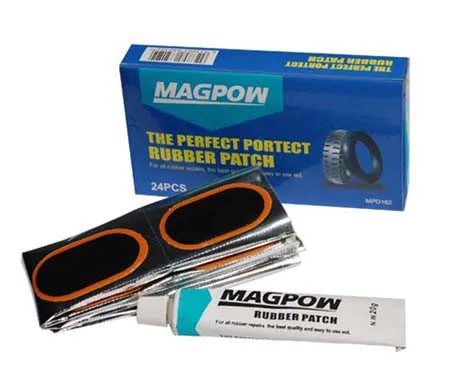
Due to the special design of the diagonal patches, the widest and longest layers adhere to the tire carcass, which is crucial for a reliable tire repair. Bias patches are used to repair both viscose and nylon tire casings. In the design of diagonal patches for road construction tires, the direction of the cords is exactly matched to the angle of intersection of the carcass threads of the tires.
Diagonal patches, thanks to the use of imported cord, are very strong and at the same time flexible. These patches are pre-cured, except for the adhesive layer of black rubber of a given thickness, which allows you to install the patch without additional duplication of interlayer rubber in the tire repair area. At the same time, patches of large sizes are made in a bombed form, that is, their profile corresponds to the profile of the tire. Such patches have no analogues not only in Russia but also abroad.
Install and select patches in accordance with the requirements of the technological instructions for tire repair and using the tables for selecting patches.
Most motorists prefer to repair their vehicle themselves in the garage, and it's understandable why not, if you have the necessary skills. For some, it's just a hobby, while for others, it's about saving money. Thus, you can not only save money, but also time.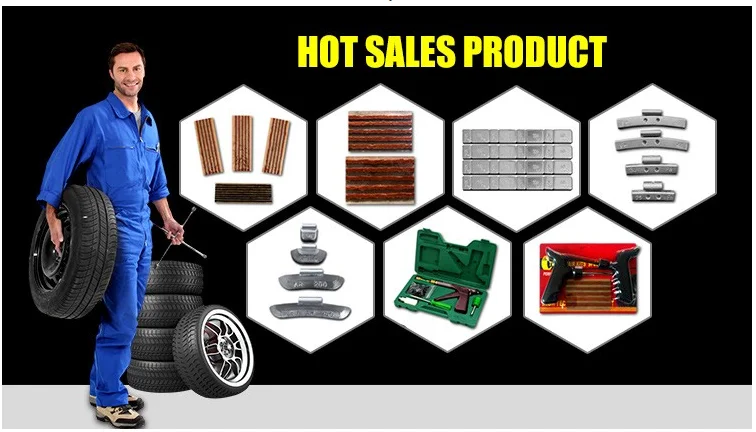 Basically, they prefer to repair cars of the domestic auto industry or budget foreign cars on their own, but no matter what your car is: foreign or Russian-made, in any case, you cannot do without a suitable set of TOPTUL tools.
Basically, they prefer to repair cars of the domestic auto industry or budget foreign cars on their own, but no matter what your car is: foreign or Russian-made, in any case, you cannot do without a suitable set of TOPTUL tools.
As a rule, a tool kit does not include keys or a wrench, so when buying a tool kit for auto repair, try to choose the right tool that will help you out more than once in any unforeseen situation.
Often, most motorists buy separately this or that tool, if necessary. On the one hand, why spend money on buying a tool if you don’t need it, and on the other hand, having bought everything you need in advance, you will know that in any situation you have everything at hand and you don’t have to run around the shops looking for something. Yes, failure is unpredictable. You never know what will break and what will need to be repaired.
Master Tool Krasnodar offers a wide range of different TOPTUL tool sets. Each set includes various ratchets, wrenches, heads, knobs and other necessary equipment.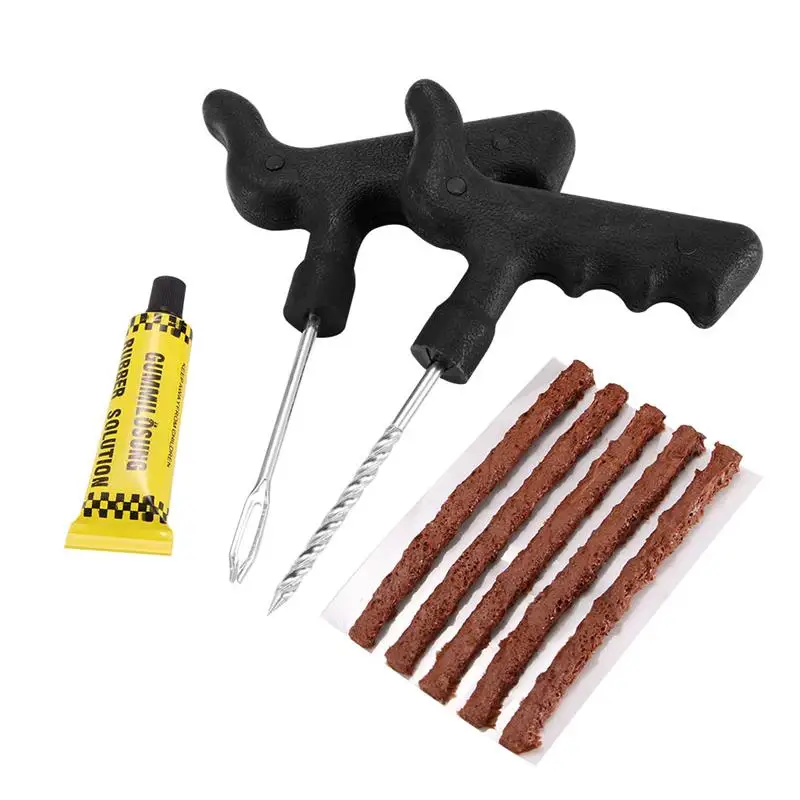 Now such kits can be found in any specialized store in large quantities, so each driver will be able to choose the best option for himself that meets all his requirements.
Now such kits can be found in any specialized store in large quantities, so each driver will be able to choose the best option for himself that meets all his requirements.
The best quality car repair tool kits come from Taiwan's Rotar Machinery Group. Do not forget that the cost of quality tools can not be cheap. Cheap things are extremely unreliable, and sometimes even dangerous!
What should be included in a car repair kit:
